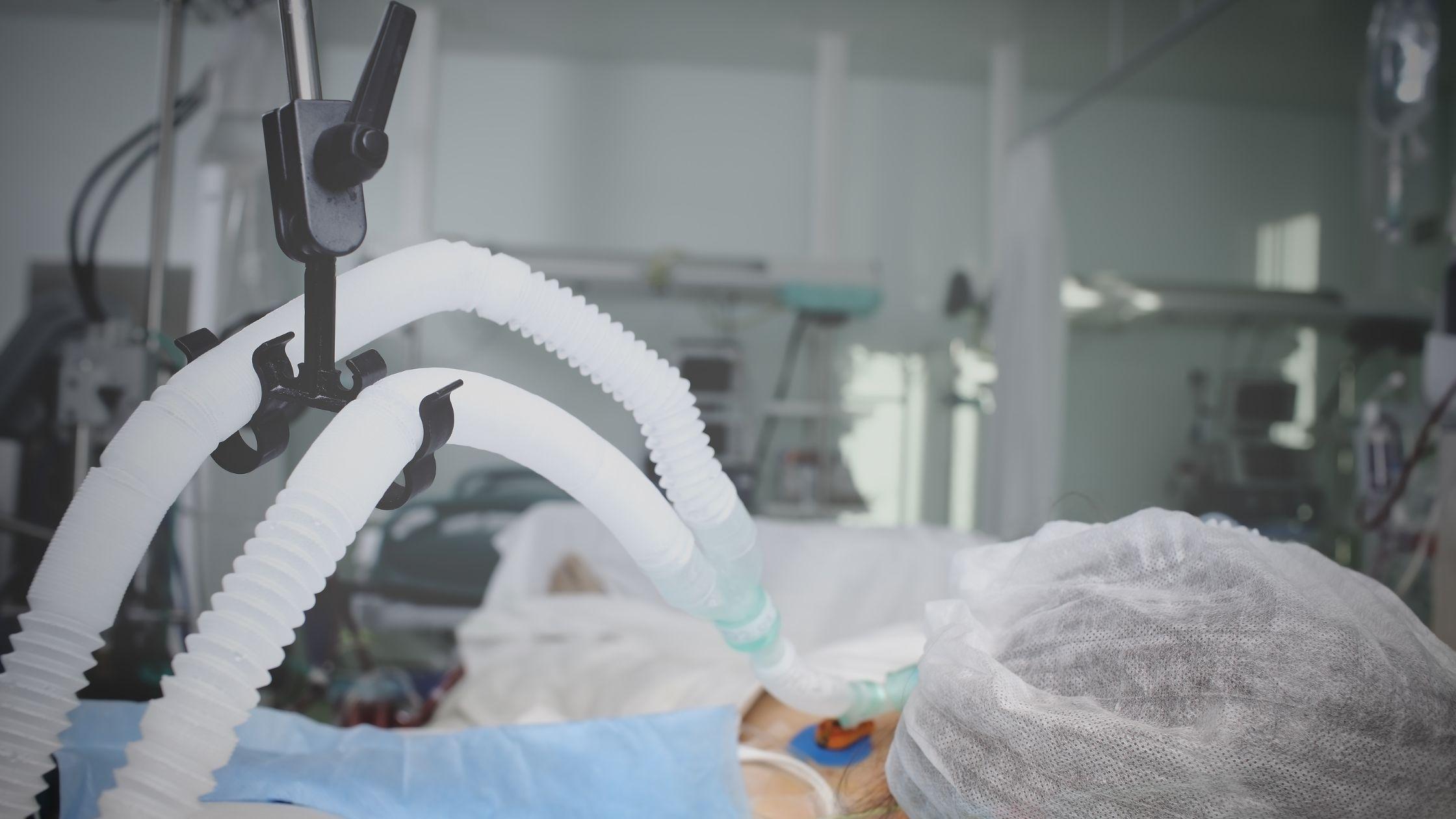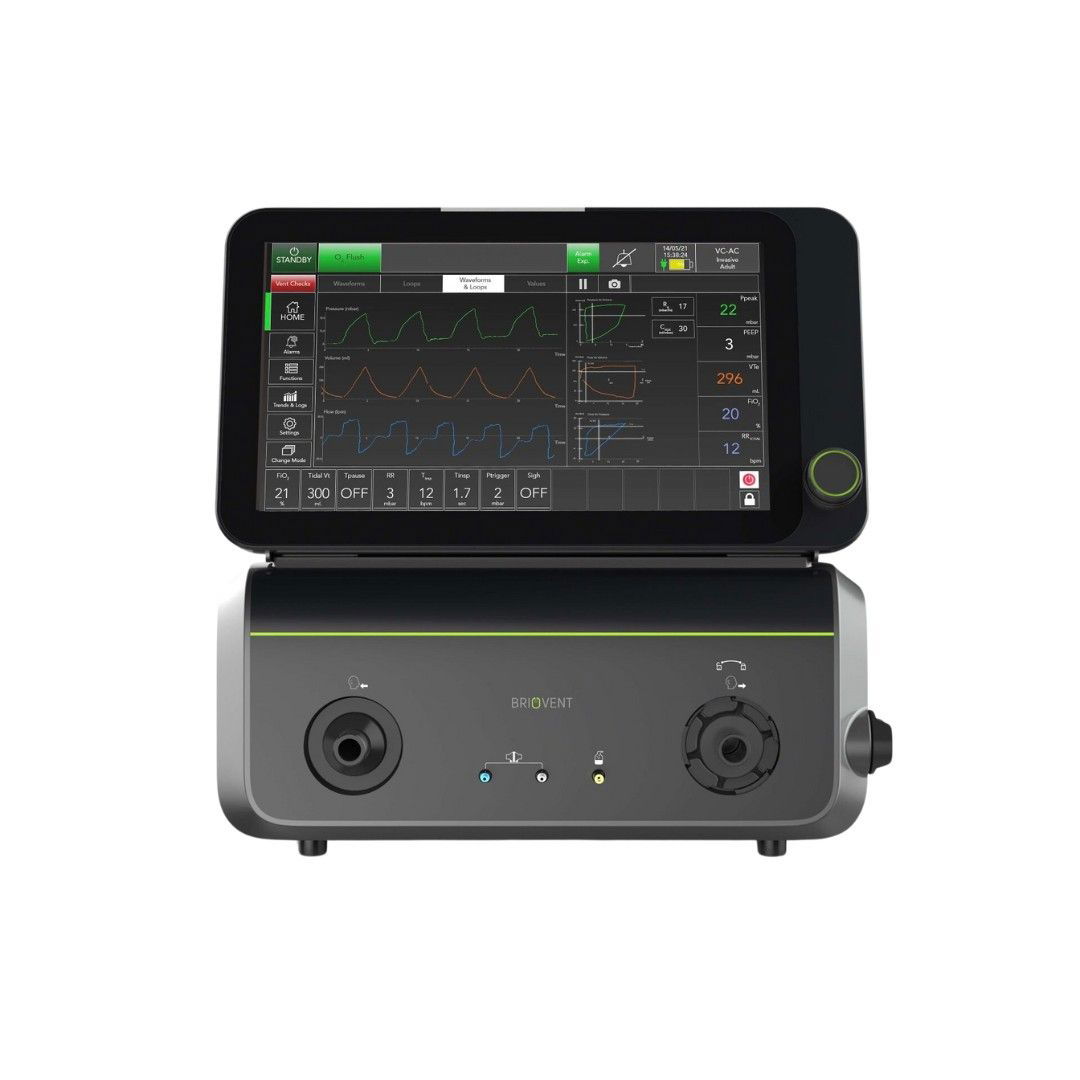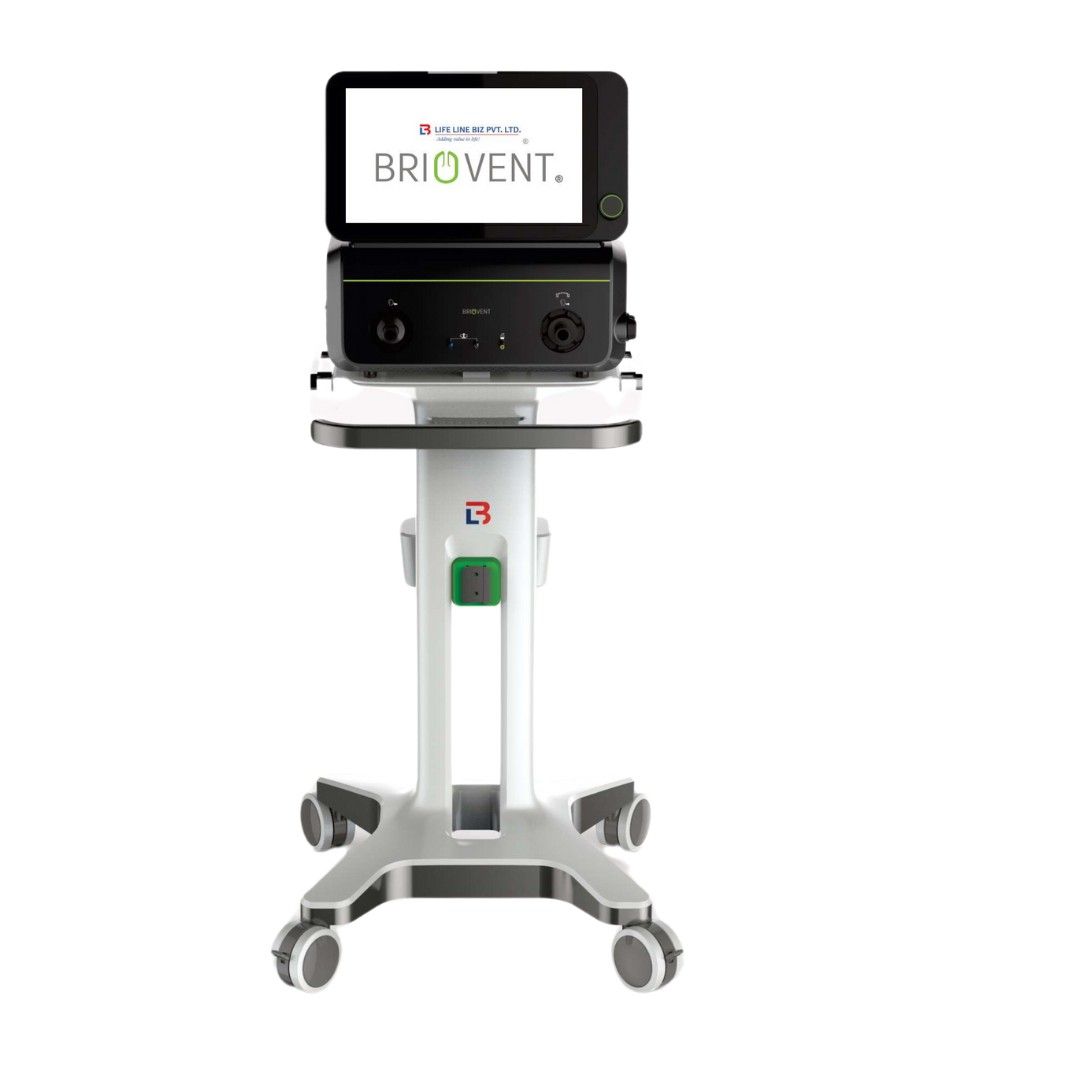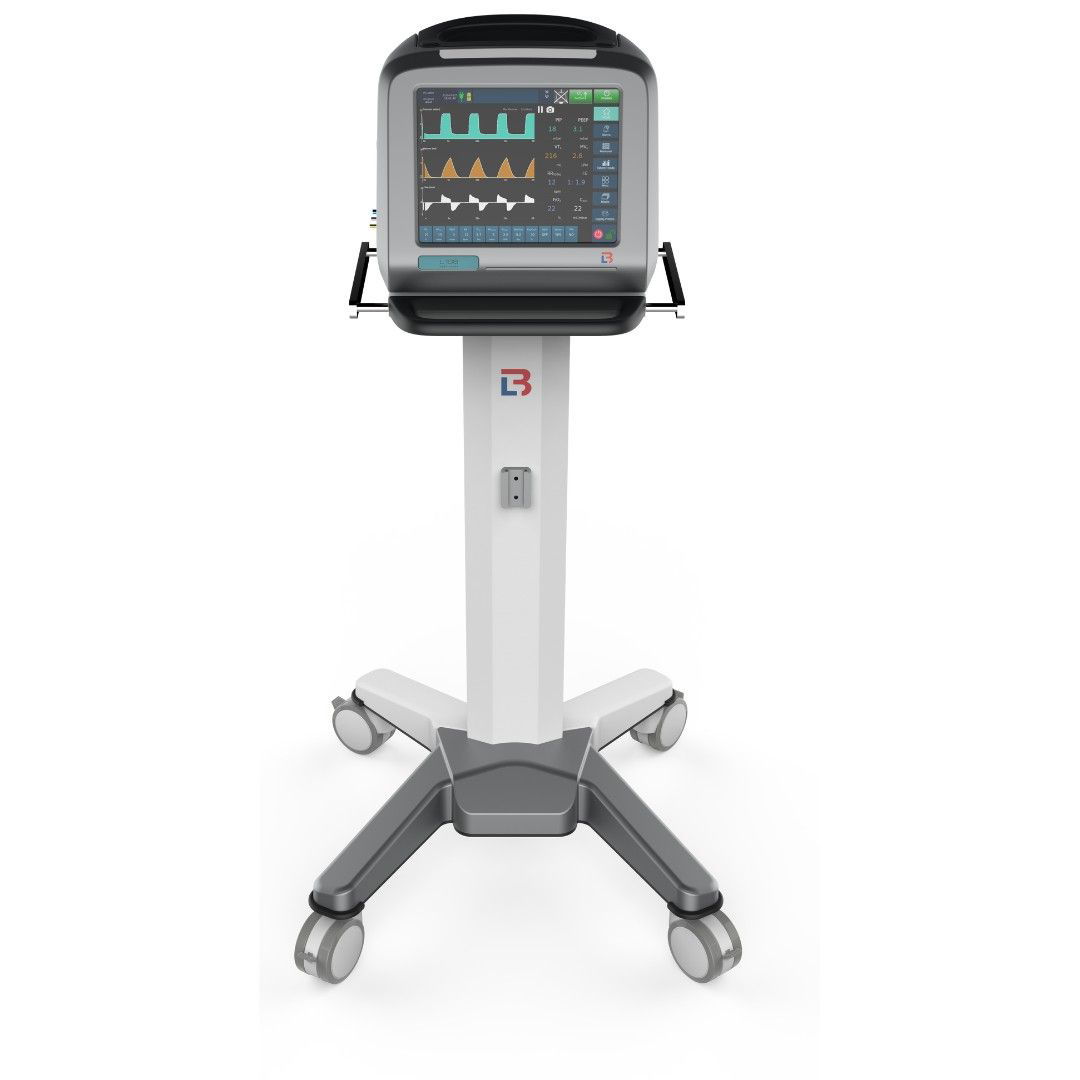Medical ventilators are essential life-support devices used in healthcare settings to assist patients with breathing difficulties or respiratory failure. They deliver controlled amounts of oxygen and assist in removing carbon dioxide from the lungs, ensuring adequate oxygenation and ventilation. This comprehensive buying guide will provide valuable insights into medical ventilators. It will help you make informed decisions when purchasing these critical devices.
Types of Medical Ventilators
Invasive Ventilators
Invasive ventilators are designed for patients who require invasive mechanical ventilation. Invasive ventilators offer various ventilation modes and settings to adapt to different patient conditions.
Non-invasive Ventilators
They are used for patients who can breathe spontaneously but require assistance in maintaining adequate ventilation. Non-invasive ventilators are commonly used for various conditions. These include sleep apnea, chronic respiratory failure, or post-extubation respiratory support.
Transport Ventilators
Transport ventilators are designed for patient transportation such as transferring patients between healthcare facilities or within a hospital. These ventilators are lightweight, compact, and portable, allowing for uninterrupted respiratory support during transit. They often feature battery backup systems and rugged construction to withstand transportation challenges.
High-Frequency Oscillatory Ventilators (HFOV)
HFOV ventilators deliver small, rapid breaths at very high frequencies, typically above 60 breaths per minute. This technique helps maintain lung recruitment and oxygenation while reducing the risk of lung injury.
Volume Ventilators
Volume ventilators deliver a predetermined volume of air to the patient’s lungs during each breath. These ventilators are commonly used in intensive care settings and provide precise control over tidal volume, respiratory rate, and inspiratory time. Volume ventilators are versatile and suitable for a wide range of patients.
Pressure Ventilators
Pressure ventilators deliver air to the patient’s lungs at a predetermined pressure level. They adjust the inspiratory pressure based on the patient’s lung compliance and airway resistance. Pressure ventilators are often used for patients with lung diseases or conditions that require careful pressure control.
Home Ventilators
Home ventilators are designed for long-term respiratory support in a patient’s home. These devices are like compact, user-friendly, and equipped with features that allow patients or caregivers to manage ventilation independently. Home ventilators offer versatility in ventilation modes and parameters to meet individual patient needs.
Factors to Consider
- Ventilation Modes and Settings: Medical ventilators offer various ventilation modes and settings to accommodate different patient conditions. When assessing ventilators, it is important to consider the available modes. These include volume control, pressure control, pressure support, and synchronized intermittent mandatory ventilation (SIMV), among others. Consider the range and flexibility of settings for parameters like tidal volume, respiratory rate, inspiratory time, and positive end-expiratory pressure (PEEP).
- Patient Age and Condition: Different patients require different ventilatory support. Consider the age range and specific conditions of the patient population that will be treated with the ventilator.
- Invasive or Non-invasive Ventilation: Determine whether the ventilator should support invasive or non-invasive ventilation. Invasive ventilation involves the use of an endotracheal tube or tracheostomy, while non-invasive ventilation uses interfaces like masks or nasal prongs. Consider the capabilities and compatibility of the ventilator with the intended ventilation approach.
- Monitoring and Alarms: Ventilators should provide comprehensive monitoring capabilities to assess patient response and ventilator performance. Look for features such as real-time monitoring of vital signs, oxygen saturation, airway pressure, and exhaled carbon dioxide. Ensure the presence of audible and visual alarms to alert healthcare providers of any abnormalities or malfunctions.
- Portability and Mobility: Consider the need for portability and mobility based on the clinical setting. Ventilators intended for transport or intra-hospital transfer should be lightweight, compact, and equipped with battery backup systems. Critical care ventilators may require additional features like integrated stands or mounting options for bedside use.
- Ease of Use and User Interface: Ventilators should have an intuitive user interface and controls that allow healthcare providers to easily operate and adjust settings. A clear and user-friendly display, graphical interfaces, and preset modes can simplify the use of the ventilator and reduce the potential for errors.
- Safety Features: Look for safety features such as built-in alarms, self-testing mechanisms, and fail-safe systems. Ventilators should have safeguards to prevent excessive pressures, disconnections, or other critical events. Additionally, consider infection control features such as bacterial filters and easily cleanable surfaces.
- Technical Support and Service: Assess the availability of technical support and after-sales service from the ventilator manufacturer. Consider factors such as warranty, training, and the manufacturer’s reputation for reliability and responsiveness to address any technical issues or maintenance requirements.
- Compliance with Standards and Regulations: Ensure that the ventilator complies with relevant medical device standards and regulatory requirements in your region. Look for certifications such as ISO 13485 for quality management systems and adherence to safety standards specific to medical electrical equipment.
- Cost and Budget Considerations: Evaluate the total cost of ownership, including initial purchase price, maintenance costs, and any required accessories or consumables. Consider the budget constraints of the healthcare facility while ensuring that the chosen ventilator meets the necessary clinical requirements.
Significance of Medical Ventilators
- Life-Saving Support: Medical ventilators are essential life-saving devices, particularly in critical care settings such as intensive care units (ICUs) and emergency departments. They assist patients with compromised respiratory function. This includes individuals who are unable to breathe independently due to acute respiratory failure, respiratory distress, or respiratory muscle weakness.
- Respiratory Assistance: Ventilators deliver controlled amounts of oxygen and air into the lungs, maintaining appropriate oxygenation and carbon dioxide elimination. They help support the patient’s respiratory system by delivering breaths with precise parameters, including tidal volume, respiratory rate, inspiratory time, and PEEP.
- Customized Ventilation: Different patients have different respiratory requirements, and ventilators offer a range of ventilation modes and settings to accommodate individual needs. Ventilators can be customized to suit different patient age groups, ranging from neonates to adults. They can also adapt to specific conditions like ARDS, COPD, or asthma.
- Adjustable Parameters: Ventilators allow healthcare providers to adjust ventilation parameters based on the patient’s condition and response. By modifying settings such as tidal volume, pressure, and oxygen concentration, clinicians can optimize ventilation to enhance gas exchange and lung function.
- Monitoring and Feedback: Ventilators provide real-time monitoring of vital signs and respiratory parameters, enabling healthcare professionals to assess the patient’s response to ventilation. They display data to clinicians, providing information such as airway pressure, oxygen saturation, and exhaled carbon dioxide levels. This data helps in making informed decisions and detecting any changes or complications.
- Critical Care Management: Medical ventilators are essential tools in managing critically ill patients, especially those with severe respiratory conditions. They can assist in stabilizing patients in emergency situations, supporting them during surgical procedures, or providing prolonged respiratory assistance during recovery.
- Support for Non-Invasive Ventilation: Ventilators can facilitate non-invasive ventilation techniques, such as continuous positive airway pressure (CPAP) or bilevel positive airway pressure (BiPAP).
- Transition Support: Ventilators also play a vital role in supporting patients during the transition from mechanical ventilation to spontaneous breathing. They can be set to weaning modes or synchronized with the patient’s respiratory effort, gradually reducing ventilator support as the patient’s condition improves.
- Patient Safety and Comfort: Modern ventilators incorporate advanced safety features to prevent complications. They have alarms and monitoring systems to alert healthcare providers of any abnormalities, disconnections, or changes in patient status. Ventilators prioritize patient comfort in various ways. They minimize noise, provide humidification, and allow adjustments to accommodate patient preferences.
Technological Advancements
With ongoing advancements in medical technology, ventilators continue to evolve. Ventilators incorporate innovative features to enhance functionality. These include touchscreen interfaces, wireless connectivity, data integration with electronic medical records (EMRs), and advanced algorithms for precise ventilation control.
Medical ventilators are critical tools in managing respiratory failure and supporting patients’ breathing when they are unable to do so independently. Their significance lies in their ability to deliver life-saving respiratory support, provide customizable ventilation, monitor patient parameters, and enhance patient safety and comfort.
Spotlight On Life Line Biz Pvt. Ltd.
Life Line Biz Pvt. Ltd., established in 1997 in Gujarat, India, specializes in the manufacture of medical equipment including medical ventilators. The company holds significant certifications such as the Free Sale Certificate (FSC), IEC 60601, ISO 13485, and EU CE. With a team size of 10 to 50 employees, Life Line Biz generates an annual turnover of up to 1.5 million USD, with export turnovers reaching up to 1 million USD. The company actively exports to regions like Nepal and Africa and is open to distributorships in the Middle-East, Europe, Africa, and Asia.
Life Line Biz Pvt. Ltd. offers a diverse range of medical ventilators tailored for different patient needs:
Briovent BV-A ICU Ventilator is designed for both adult and pediatric use. It is a high-performance, turbine-driven ventilator that supports both invasive and non-invasive ventilation modes and is equipped with extensive monitoring tools. It is prominently used in regions such as South Africa, Kenya, Nigeria, the Philippines, and the UAE.
Briovent BV-N Neonatal Ventilator is another critical product, primarily used in neonatal intensive care settings. It supports a broad range of invasive and non-invasive ventilation modes and is equipped with high-flow nasal oxygen therapy and advanced pressure control modes.
L108-A Adult Ventilator is versatile and high-performance, suitable for ICU and high-frequency jet ventilation (HFJV) settings. It can accommodate both adult and pediatric patients and features a compact, turbine-driven design.
L108-N Neonatal Ventilator is specially designed for neonatal intensive care units, offering features like lightweight design, ergonomic handling, high-flow oxygen therapy, and comprehensive monitoring and ventilatory support, making it ideal for the most vulnerable patients.
Life Line Biz Pvt. Ltd. is a key player in the medical device industry, specializing in developing and manufacturing ventilators that cater to adult, pediatric, and neonatal needs. The company’s commitment to quality, innovation, and global reach ensures it remains a reliable partner in healthcare, offering products that enhance accessibility and affordability in medical care.
Other Leading Manufactures of Medical Ventilators
- AVI Healthcare Pvt. Ltd.: AVI Healthcare Pvt. Ltd. is a trusted manufacturer of medical equipment, including medical ventilators. The company focuses on providing reliable and cost-effective ventilator solutions to healthcare providers worldwide. AVI Healthcare ventilators are designed to deliver efficient and patient-centric ventilation, incorporating their ventilators are known for their durability, ease of use, and ability to adapt to various clinical settings.
- Optimedics LLP: A leading medical device manufacturer based in India, specializing in the production of cutting-edge medical ventilators. Optimedics LLP designs and manufactures state-of-the-art ventilators that cater to the critical needs of patients with respiratory ailments. Their expert team of engineers and medical professionals work tirelessly to ensure the highest quality standards and compliance with international regulations. By leveraging advanced technology and a customer-centric approach, Optimedics LLP continues to make significant contributions to the healthcare sector, empowering healthcare providers with reliable and life-saving respiratory solutions.
MAX Meditech Pvt. Ltd. (formerly A.B. Industries): MAX Meditech Pvt. Ltd. is a prominent manufacturer of medical equipment, including medical ventilators. They are known for their innovative and high-quality ventilator solutions that meet international standards. The company focuses on advanced technology and continuous research to develop reliable and efficient ventilators for healthcare settings. MAX Meditech’s ventilators are designed to provide precise and customizable ventilation options, ensuring patient safety and comfort.
- HILD Defense and Aerospace Pvt. Ltd. (HILD Medical): HILD Defense and Aerospace Pvt. Ltd., known as HILD Medical, is a leading manufacturer of medical equipment, including medical ventilators. With its expertise in defense and aerospace technology as HILD Medical brings cutting-edge innovation to the field of medical ventilation. Their ventilators are designed to deliver reliable and accurate ventilation, catering to the diverse needs of patients in critical care settings. HILD Medical focuses on incorporating advanced features and safety mechanisms in its ventilators to enhance patient care.
- BPL Medical Technologies Pvt. Ltd.: BPL Medical Technologies Pvt. Ltd. is a renowned manufacturer of medical devices and equipment, including medical ventilators. The company has a strong presence in the healthcare industry and is committed to developing high-quality and user-friendly ventilators.
Medical ventilators are critical tools in managing respiratory failure and supporting patients’ breathing when they are unable to do so independently. Their significance lies in their ability to deliver life-saving respiratory support, provide customizable ventilation, monitor patient parameters, and enhance patient safety and comfort. If you are also interested in exploring the guides for laryngoscopes, be sure to check out Laryngoscopes Guide.
Disclaimer: This buying guide provides general information and should not replace professional advice and guidance.




